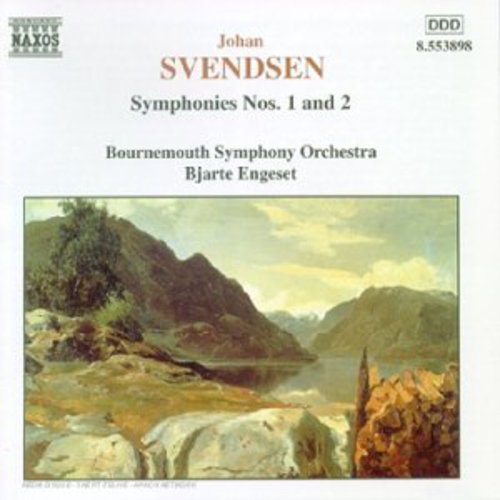Show results for
Deals
- 4K Ultra HD Sale
- Action Sale
- Alternative Rock Sale
- Anime sale
- Award Winners Sale
- Bear Family Sale
- Blu ray Sale
- Blues on Sale
- British Sale
- Classical Music Sale
- Comedy Music Sale
- Comedy Sale
- Country Sale
- Criterion Sale
- Electronic Music sale
- Fantasy Film and TV
- Folk Music Sale
- Hard Rock and Metal Sale
- Horror Sci fi Sale
- Jazz Sale
- Kids and Family Music sale
- Kids and Family Sale
- Metal Sale
- Music Video Sale
- Musicals on Sale
- Mystery Sale
- Naxos Label Sale
- Page to Screen Sale
- Paramount Sale
- Pop and Power Pop
- Rap and Hip Hop Sale
- Reggae Sale
- Rock and Pop Sale
- Rock Legends
- Soul Music Sale
- TV Sale
- TV Sale
- Vinyl on Sale
- War Films and Westerns on Sale

Symphonies 1 & 2
- Format: CD
- Release Date: 9/29/1998

Symphonies 1 & 2
- Format: CD
- Release Date: 9/29/1998
- Composers: Johan Svendsen
- Conductors: Bjarte Engeset
- Orchestras: Bournemouth Symphony Orchestra
- Label: Naxos
- UPC: 730099489829
- Item #: NAX948982
- Genre: Classical
- Release Date: 9/29/1998

Product Notes
The Symphony No. 1 in D major, scored for pairs of flutes, oboes, clarinets and bassoons, four horns, two trumpets, three trombones, timpani and strings, opens with an effective Molto allegro, in text-book sonata-allegro form. The repeated exposition with it's principal and secondary themes is exploited in a central development, which ends in mounting excitement as the principal theme returns in recapitulation. The strings start the A major Andante, the longest of the four movements of the symphony, with a strongly felt melody, in which clarinets, bassoons and French horns join. This provides the chief substance of the movement, as it returns in various guises, in part or in whole, in Elgarian grandeur or in sparer textures. There is a further shift of key to G major for the Allegretto Scherzando, with it's opening peasant dance. There is a succeeding section in B flat, exploring the higher registers of the flutes and a shift to A major for a passage accompanied by the softest of plucked strings. There are further changes of key before the return of the first material and the passage accompanied by softly plucked strings, with which the movement ends. The last movement starts with a slow introduction of increasing intensity and excitement, introducing the sonata-allegro form movement, with it's syncopated principal theme and contrasting secondary theme, introduced first by the strings. The material is duly explored in a tightly constructed development, to return in the expected recapitulation. Svendsen's Symphony No. 2 in B flat major, written some ten years later than the first of his symphonies, further establishes his position as a major symphonic composer. Similarly scored, the work absorbs and transforms something of Wagner's influence into a classical structure, the first subject first heard from cellos and French horn makes it's first return, after the central development, with the flute, while the secondary material, first heard in the woodwind, makes it's return with the help of the strings. The slow movement, heralded by the somber notes of the French horn, entrusts it's first theme to the clarinet, in music that owes much of it's color to the deft handling of the woodwind. The sound dies away, with a change of key from the E flat of the Andante to F major for the Intermezzo, a country dance, with it's suggestions of Norway and it's contrasting trio sections. There is a slow introduction to the Finale, suggesting something of what is to follow and leading, with a crescendo, to the Allegro con fuoco, with it's cheerful principal subject and contrasting secondary material, duly and dramatically developed, to re-appear in recapitulation.

